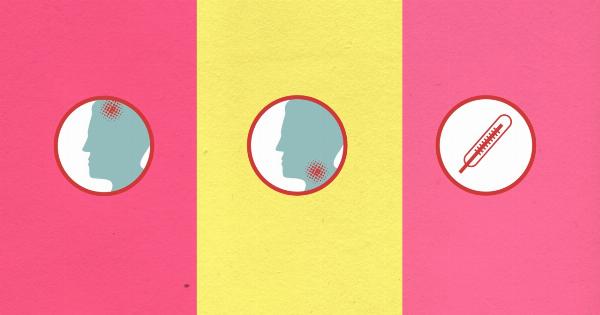Sinusitis, also known as a sinus infection, is a common condition that affects the sinuses – the hollow spaces surrounding the nasal passages.
It occurs when the sinuses become inflamed and filled with fluid, resulting in discomfort and various other symptoms. Understanding the diagnosis, symptoms, and treatment options for sinusitis is crucial for effective management and relief. This article provides comprehensive information on this topic.
Diagnosis
Diagnosing sinusitis typically involves a combination of medical history evaluation, physical examination, and, in some cases, additional tests. Here are the common methods used for diagnosing sinusitis:.
1. Medical History Evaluation
This step involves discussing your symptoms, their duration, and any triggers that may have caused or worsened sinusitis. Your doctor may ask questions to assess the severity of your condition and its impact on your daily life.
Previous episodes of sinusitis or other related respiratory conditions will also be examined.
2. Physical Examination
During a physical examination, your doctor will inspect your nasal passages, paying attention to any signs of inflammation, swelling, or nasal discharge. They may also examine your throat, neck, and face for further insights into your sinus health.
Additionally, they will check for tenderness or pain in the sinus areas.
3. Nasal Endoscopy
In certain cases, your doctor may perform a nasal endoscopy to view the inside of your sinuses more closely. This involves inserting a thin, flexible tube with a light and camera into your nasal passages, providing detailed images of the sinus tissues.
A nasal endoscopy can help identify any obstructions, polyps, or signs of infection.
4. Imaging Tests
If the diagnosis remains unclear or to assess the extent of the sinus infection, imaging tests such as X-rays, CT scans, or MRI scans may be recommended.
These tests can provide detailed images of the sinuses, helping to identify abnormalities, blockages, or other contributing factors.
Symptoms
The symptoms of sinusitis can vary in type and intensity, depending on the duration and underlying cause of the infection. Common symptoms include:.
1. Facial Pain and Pressure
Sinusitis often leads to pain and pressure in the face, particularly in the areas overlying the affected sinuses. This discomfort may worsen when bending over or leaning forward.
2. Nasal Congestion and Discharge
Excessive mucus production and inflammation can cause nasal congestion and discharge. The mucus may be thick and yellow or green in color. This congestion can make breathing through the nose difficult.
3. Headache
Many individuals with sinusitis experience headaches, which can range from mild to severe. These headaches are often felt in the forehead, temples, and behind the eyes. Sinus headaches may worsen with sudden movements or changes in pressure.
4. Reduced Sense of Smell and Taste
Sinusitis can affect your ability to smell and taste properly. The inflammation and swelling in the sinuses can cause a temporary or persistent loss of smell (anosmia) and taste (ageusia).
5. Fatigue and Generalized Discomfort
Chronic sinusitis may lead to persistent fatigue, as the constant inflammation and discomfort can disrupt sleep and daily activities. Other symptoms may include ear pressure, cough, bad breath, and a general feeling of malaise.
Treatment
Treatment options for sinusitis aim to relieve symptoms, eliminate infection, and prevent further complications. The appropriate treatment method depends on the severity and underlying cause of the sinusitis. Here are the common approaches taken:.
1. Self-care Measures
Mild cases of sinusitis often resolve without medical intervention. Self-care measures include resting, staying hydrated, using saline nasal sprays or rinses, and applying warm compresses to alleviate facial pain and pressure.
Steam inhalation can also help in loosening nasal congestion.
2. Medications
In cases where self-care measures are insufficient or symptoms worsen, medications may be prescribed. These options include:.
a) Pain Relievers: Over-the-counter pain relievers, such as acetaminophen or ibuprofen, can help alleviate facial pain, headache, and fever associated with sinusitis.
b) Nasal Decongestants: Short-term use of nasal decongestant sprays or drops may provide immediate relief from nasal congestion. However, these should not be used for more than a few days to avoid rebound congestion.
c) Nasal Steroid Sprays: Nasal steroid sprays, available by prescription, help reduce inflammation and relieve nasal symptoms.
d) Antibiotics: If the sinusitis is caused by a bacterial infection or persists for an extended period, antibiotics may be prescribed to eliminate the infection.
It’s crucial to complete the full course of antibiotics as advised by your healthcare provider.
e) Allergy Medications: If allergies contribute to chronic sinusitis, allergy medications like antihistamines may be recommended to manage symptoms.
3. Immunotherapy
For individuals with chronic sinusitis triggered by severe allergies, immunotherapy may be an effective option. This treatment involves administering gradually increasing doses of allergens to build immunity and reduce allergic reactions over time.
4. Sinus Drainage
In cases where sinusitis is caused by blocked sinus passages or structural abnormalities, sinus drainage procedures may be necessary. This can include:.
a) Saline Irrigation: Also known as nasal lavage or sinus rinse, saline irrigation involves flushing out the sinuses with a saline solution to remove mucus and allergens, thereby reducing inflammation and improving nasal drainage.
b) Balloon Sinuplasty: This minimally invasive procedure involves inserting a small balloon into the blocked sinus passage and inflating it to widen the space. It helps promote proper sinus drainage and relieve symptoms.
c) Functional Endoscopic Sinus Surgery (FESS): FESS may be recommended when other treatments fail to provide relief.
It involves using endoscopes and specialized instruments to remove obstructions, polyps, or scar tissue hindering normal sinus drainage.
5. Lifestyle Modifications
Certain lifestyle changes can help manage sinusitis symptoms and reduce the risk of future episodes. These include:.
a) Avoiding Trigger Factors: Identifying and avoiding triggers that worsen sinusitis symptoms, such as environmental allergens, irritants, or certain foods, can prevent recurrent episodes.
b) Maintaining Adequate Humidity: Using a humidifier or ensuring proper indoor moisture levels can help prevent nasal passages from drying out, reducing the risk of irritation and discomfort.
c) Practicing Good Nasal Hygiene: Regularly rinsing your nasal passages with saline solution or using nasal irrigation methods can help keep the sinuses clear and reduce the risk of infections.
d) Quitting Smoking: If you smoke, quitting can significantly improve sinus health, as smoking is known to worsen sinusitis symptoms and delay healing.
While the above treatments help alleviate the symptoms of sinusitis, it’s crucial to consult a healthcare professional for an accurate diagnosis and personalized treatment plan.



























